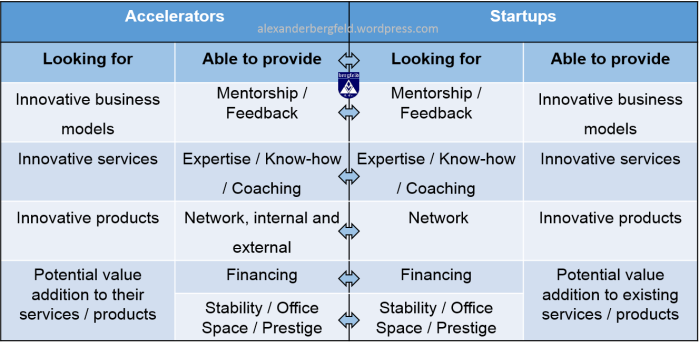In the last blog post I shed some light on the difference on how corporate incubators / accelerators measure progress, compared to young technology ventures.
This comparison demonstrated that while corporates tend to measure progress by looking at the big picture (KPIs) startups (especially first-time entrepreneurs) measure their progress by taking their development step by step.
Taking this difference into account the developmental progress of the startup in acceleration can be measured.
Using little steps to measure the journey
Steve Blank stated that startups need to figure out several unknowns when building the company.
Startups need overcome and solve the unknown needs and wants and guide it towards a viable business model. Especially for first-time entrepreneurs a lot of business aspects are “unknowns” and the accelerator has the responsibility to help the entrepreneur to understand the basics and provide mentorship (besides providing some basic financing, infrastrucuture and other intangible resources).

In order to successfully do so the corporate accelerator should include the Key Success Factors used by the startup to measure the performance of the acceleration. By doing so the accelerator can utilize the Key Success Factors of startups to support the Key Performance Indicators.
Which Key Success Factors should be utilized?
It is possible that startups focus on success factors which might not be needed at the current state of development. Here the accelerator needs to step in and provide guidance for the startup to focus on the crucial success factors. This professional guidance is one of the most important aspects for a successful acceleration.
In the end the accelerator needs to ensure that the key success factors support at least one of the nine following points.
The Key Success Factor should aid the startup in…:
- … defining its mission, vision, and goals;
- … understanding the market;
- … establishing and building acquisition models and network;
- … understanding and building internal processes;
- … aggregating of entrepreneurial know-how;
- … aggregating of managerial capacities, leadership, and team building;
- … understanding of project management;
- … actual development of the business, the product, and service;
- … undergoing a reality check.
The reality check, especially in terms of market size, is an important aspect to execute. Young ventures tend to have a reality distortion in terms of what can be achieved and realize in the efficiency phase that their expectations might be unfunded.

Helping startups to understand where they stand in their development and what is possible to achieve in a relatively short timeframe is important feedback especially at the start of a venture!
Especially first-time entrepreneurs and very young startups which just joined a corporate acceleration program experience a hart reality check when joining an accelerator. Very quickly they have to learn that the meaning of a successful acceleration means that they will be provided support and needed resources, however they are fully responsible for their own progress and have to work hard for it.
Understanding Key Success Factors means understanding crucial parts of a startups internal context and being able to assess the wants and needs of the venture. This heuristic understanding forms a basis for efficiently and effectively supporting the startup on its search for a viable business model and the right product / market fit.
Overall the corporate acceleration performance can be visualized by pooling related startup success factors and by putting them into a matrix.
How this can look like I will explain in the nexts posts.


